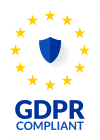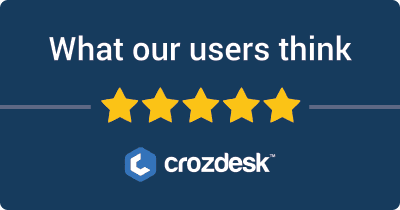
Brandwatch and Talkwalker are two leading tools in the realm of social listening, each offering unique capabilities for brands looking to harness the power of consumer insights from social media and online platforms. Both tools serve the primary purpose of helping organizations monitor brand sentiment, track industry trends, and analyze competitor activity, ensuring businesses stay informed and responsive in an ever-evolving digital landscape.
Users commonly turn to Brandwatch and Talkwalker for their robust analytics, extensive data coverage, and ability to derive actionable insights from large volumes of social media content. These tools enable marketers, PR professionals, and analysts to make data-driven decisions that enhance their brand’s visibility and engagement.
Key comparison aspects include:
- Features: Explore the specific capabilities each platform offers, such as sentiment analysis, image recognition, and integration with other marketing tools.
- Pricing: Understand the cost structures and what each tool provides at different price points, helping users assess which fits within their budget.
- Ease of Use: Evaluate user interface design and usability, which can significantly impact the efficiency of data analysis and reporting tasks.
- Customer Support: Look into the resources available for troubleshooting and guidance, which can influence user experience and satisfaction.
By examining these aspects, users can make informed decisions on which social listening tool best suits their needs and business objectives.
Brandwatch VS Talkwalker: Which tool is the most popular?
| Tool | Number of Reviews | Average Rating | Positive Reviews | Neutral Reviews | Negative Reviews |
|---|---|---|---|---|---|
| Talkwalker | 20 | 4.3 | 19 | 0 | 1 |
| Brandwatch | 15 | 2.93 | 8 | 0 | 7 |
Talkwalker is the most popular tool based on the review count and average rating, receiving a total of 20 reviews with an impressive average rating of 4.3. It has significantly more positive reviews (19) compared to negative ones (1), indicating strong user satisfaction.
In contrast, Brandwatch is the least popular, with 15 reviews and a lower average rating of 2.93. The tool has a higher number of negative reviews (7) compared to positive (8), suggesting user dissatisfaction.


Brandwatch and Talkwalker: Quick Comparison Overview
| Feature/Aspect | Ahrefs | SEMrush |
|---|---|---|
| Primary Features | – Site Explorer – Keyword Explorer – Backlink Checker – Content Explorer – Rank Tracker |
– Keyword Research – Site Audit – Position Tracking – Content Analyzer – Marketing Insights |
| Target Audience | – SEO professionals – Digital marketers – Agencies focusing on content marketing and backlink analysis |
– Digital marketers – SEO experts – Content marketers – Social media marketers and PPC specialists |
| Main Advantages | – Robust backlink analysis – Comprehensive keyword data – Intuitive user interface – Constantly updated index |
– All-in-one digital marketing tool – Extensive competitor analysis – Wide array of tools for SEO and PPC – Integrated social media management |
| Core Value Proposition | Focused on providing in-depth SEO insights, particularly strengths in backlink profiles and organic keyword rankings. Ideal for users prioritizing content strategy and link-building efforts. | Offers a holistic view of digital marketing, making it easier to manage all aspects of online presence through an extensive range of tools for SEO, PPC, and social media marketing. |
| Ideal Use Cases | – Conducting comprehensive link audits – Developing effective content strategies – Tracking backlinks and organic rankings – Keyword planning for SEO campaigns |
– Managing and optimizing PPC campaigns – Conducting competitive analysis for market positioning – Comprehensive content analytics and SEO tracking – Social media metrics and management |
Most liked vs most disliked features of Brandwatch and Talkwalker
| Tool | Most Liked Features | Most Disliked Features |
|---|---|---|
| Brandwatch | – Extensive access to historic data enhances understanding of consumer behavior. – Tailored dashboards for specific campaigns. – Effective sentiment tracking tools. – Positive customer support and integration. – User-friendly interface with easy setup for queries and dashboards. |
– Need for more straightforward and extensive exporting options. – Limited features on the mobile app. – Daily download limits hinder comprehensive analyses. – Onboarding process needs improvement. – Cumbersome setup for sentiment classification models. |
| Talkwalker | – Strong social listening capabilities for real-time monitoring. – Beneficial dashboard creation and customizable reporting. – Effective sentiment analysis for public perception. – Allows complex queries for deeper insights. – Intuitive user interface for new users. |
– Recent updates made dashboard filtering more convoluted. – Concerns about metrics displayed in abbreviated formats. – Buggy tagging feature affecting workflow. – Lack of real-time monitoring for LinkedIn and Facebook. – Inefficiency in applying conditions for topic setups. |
Key Features of Brandwatch vs Talkwalker
Sure! Below is a comparison of the key features of Brandwatch and Talkwalker as social listening tools, including their unique aspects and benefits to users.
Brandwatch
1. Consumer Insights:
- Benefit: Users can analyze consumer behavior, preferences, and trends, leading to better-informed marketing strategies.
- Unique Aspect: Utilizes advanced AI and machine learning for deeper insights into consumer sentiment and trends.
2. Social Media Analytics:
- Benefit: Offers comprehensive metrics on social media performance, aiding in understanding campaign effectiveness and audience engagement.
- Unique Aspect: Real-time analytics, allowing brands to track conversations as they happen.
3. Brand Monitoring:
- Benefit: Keeps track of brand mentions across various platforms, enabling timely responses and engagement.
- Unique Aspect: Advanced sentiment analysis helps differentiate between positive, negative, and neutral mentions.
4. Competitive Analysis:
- Benefit: Users can benchmark their performance against competitors, identifying strengths and weaknesses.
- Unique Aspect: Provides a detailed analysis of market trends alongside competitor strategies.
5. Visual Insights:
- Benefit: Offers infographics and visual reports, making data more accessible and understandable for stakeholders.
- Unique Aspect: Customizable dashboards that focus on the most relevant data for each user or team.
6. Integrations:
- Benefit: Compatible with various CRM and marketing tools, improving workflow and data consistency across platforms.
- Unique Aspect: Extensive integration capabilities enhance the adaptability of Brandwatch within existing systems.
Talkwalker
1. Social Listening:
- Benefit: Tracks conversations about brands across social media and the web, helping identify issues or opportunities in real-time.
- Unique Aspect: Offers image recognition technology that can identify brand logos and context in images, expanding the scope beyond text.
2. Trend Analysis:
- Benefit: Users can spot emerging trends and insights, leading to proactive marketing strategies.
- Unique Aspect: Predictive analytics capabilities allow brands to anticipate future events based on past data.
3. Campaign Performance Tracking:
- Benefit: Enables users to measure the success of marketing campaigns with specific metrics relating to engagement and reach.
- Unique Aspect: Ability to compare performance with historical data for better strategic decisions.
4. Crisis Management:
- Benefit: Alerts users to negative mentions and potential PR crises, allowing for quick mitigation.
- Unique Aspect: The ‘Alert’ feature can notify users in real-time of spikes in negative sentiment.
5. Influencer Tracking:
- Benefit: Identifies key influencers within any specific niche, enhancing outreach efforts and partnership opportunities.
- Unique Aspect: Detailed influencer scoring system helps brands select the most effective influencers for their initiatives.
6. Visualization Tools:
- Benefit: Provides comprehensive visual dashboards and reports which summarize complex data into digestible insights.
- Unique Aspect: Offers customizable templates to fit organizational needs, among numerous pre-built dashboards.
Conclusion
Both Brandwatch and Talkwalker are robust social listening tools, each with its own strengths. Brandwatch excels in its consumer insights and sentiment analysis, making it perfect for brands focusing on deep, nuanced understanding of their audiences. In contrast, Talkwalker stands out with its image recognition and predictive analytics, offering a broad scope of monitoring and trend analysis. Ultimately, the choice between them should depend on the specific needs and priorities of the user or organization.
Brandwatch vs Talkwalker Pricing Comparison
| Feature/Brand | Brandwatch | Talkwalker |
|---|---|---|
| Monthly Subscription | Starts at $800/month | Starts at $9,800/month |
| Annual Subscription | Starts at $7,200/year | Starts at $8,900/year |
| Free Trial | Not available | 14-day free trial available |
| Entry Tier Offerings | – Social Listening | – Social Media Analytics |
| – Basic Analytics | – Basic and Advanced Analytics | |
| – Limited Historical Data | – Limited Historical Data | |
| Mid-Tier Offerings | – Enhanced Analytics | – Enhanced Social Listening |
| – Access to API | – Access to API | |
| – Custom Reporting Features | – Custom Reporting | |
| Top Tier Offerings | – Comprehensive Data Analysis | – Advanced AI Analytics |
| – White-Label Reporting | – White-Label Reporting | |
| – Multiple User Access | – Collaboration Features | |
| Customer Support | – Email and Chat Support | – Dedicated Account Manager |
| Additional Discounts | – None specified | – Potential volume discounts available |
Summary of Key Differences:
- Pricing Structure: Brandwatch is more affordable for entry-level users, while Talkwalker has a higher starting price but offers extensive capabilities.
- Free Trial: Talkwalker provides a 14-day free trial, whereas Brandwatch does not offer free trials.
- Reporting and Analytics: Talkwalker emphasizes advanced AI analytics and collaboration features in higher tiers, while Brandwatch focuses on comprehensive data analysis and white-label reporting.
- Support: Talkwalker includes dedicated account management for its users, while Brandwatch focuses on email and chat support services.
This structured comparison assists in weighing the options based on budget and feature needs between Brandwatch and Talkwalker.
Support Options Comparison: Brandwatch vs Talkwalker
| Support Option | Brandwatch | Talkwalker |
|---|---|---|
| Live Chat | Available during business hours; efficient for quick inquiries. | Available; facilitates instant communication. |
| Phone Support | No dedicated phone support for users. | Offers phone support for customers in higher-tier plans. |
| Documentation | Comprehensive knowledge base, tutorials, FAQs, and guides are available for self-service assistance. | Extensive documentation, including user guides and FAQs tailored to specific use cases. |
| Additional Resources | Regular webinars and training sessions; community forums for user engagement and knowledge sharing. | Offers webinars, tutorials, and a resource center with case studies and articles for deeper learning. |
Unique Features of Brandwatch Vs Talkwalker
| Feature | Brandwatch | Talkwalker | Added Value and Importance |
|---|---|---|---|
| Consumer Insight | Advanced machine learning algorithms for insights generation | Deep contextual insights using image recognition technology | Provides brands with a deeper understanding of consumer sentiment and behavior, enabling targeted campaigns. |
| Topic Clusters | Automatically generates topic clusters for complex queries | Offers trend prediction tools based on social conversations | Helps marketers identify emerging trends quickly, allowing them to adapt strategies in real-time. |
| Image and Video Analytics | Automated analysis of visual content connected to brand discussions | Extensive video analysis capabilities across platforms | Enhances the ability to analyze non-textual content, providing a fuller picture of brand engagement. |
| Historical Search | Access to historical data spanning multiple years | Real-time and historical data comparison features | Supports brands in evaluating long-term campaign performance and strategic adjustments based on historical context. |
| Campaign Performance Evaluation | Offers integrated tools for tracking campaign effectiveness | In-depth social performance analytics, including ROI measurement | Empowers marketers with clear insights on promotional effectiveness, enabling better allocation of resources. |
| Crisis Management Alerts | Proactive alerts for identifying potential crises early | Crisis management dashboard with visual tracking metrics | Aids brands in swiftly addressing PR issues, minimizing reputational damage through timely interventions. |
| Audience Segmentation | Detailed demographic and psychographic segmentation tools | Building brand personas based on comprehensive audience analysis | Facilitates personalized marketing strategies by accurately targeting specific consumer segments. |
| Integration with CRM Tools | Seamless integration with major CRM platforms for data cohesion | Enhanced API connections with various marketing tools | Promotes data-driven decision-making by consolidating customer interactions across platforms. |
| Competitive Benchmarking | Provides comprehensive competitor analysis reports | Presents social share of voice metrics visually | Assists brands in understanding their position in the market relative to competitors, enhancing strategic positioning. |
| Multilingual Capabilities | Advanced language processing for diverse global audiences | Supports numerous languages with enhanced sentiment analysis | Broadens the reach of brands into global markets by understanding sentiment in local contexts. |


